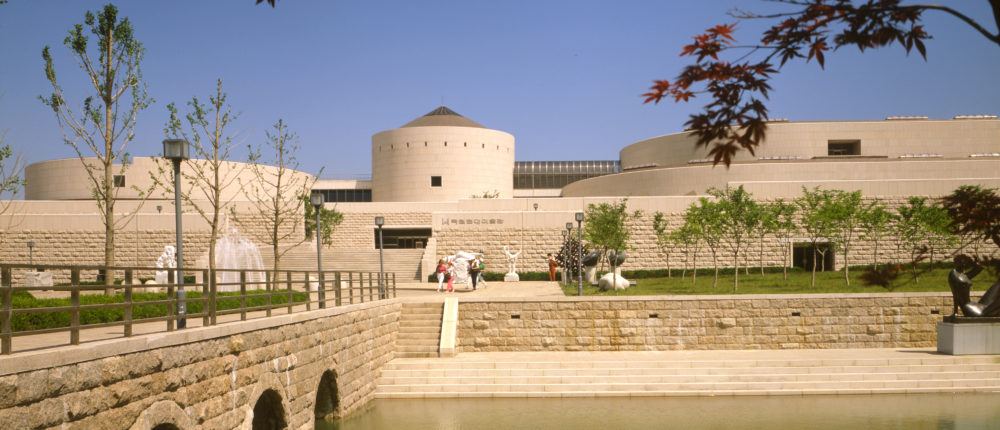
Architectural Heroes Aren’t Only of the Past
Every field has its heroes. In architecture, heroic designers have often been celebrated both for their skills and as public personalities. Frank Lloyd Wright and Louis Kahn were icons in the 20th century. In the 21st, Zaha Hadid was as bold and evocative as her buildings, and she became a “starchitect” (to use the industry-specific parlance), her untimely death further elevating her to what-might-have-been status. But heroes are only human, and their deaths do not automatically convey a permanent place in the pantheon. They do, however, allow for a fresh perspective on the living.
I reside in the New Haven, Connecticut, area, a relatively small city with an outsize architectural legacy. For many decades, Yale has created a fertile field for architects. It is both a world-class patron of buildings and home to an architecture school that has played a huge role in shaping the profession. The school’s deans—luminaries including Paul Rudolph, Charles Moore, Cesar Pelli, Robert A.M. Stern, and now Deborah Berke—are also often worldwide cultural figures. In this same little city, Kevin Roche, Herb Newman, and (in nearby Hartford) Tai Soo Kim won large commissions and saw their structures celebrated across the globe.
But perspective changes over time. The deaths in recent years of designers Pelli and Roche and Yale architectural historian Vincent Scully have brought to many a sharp focus to the reality that time is fleeting, that even the great are mortal. We all have limited time on this planet, so this post-mortem consciousness raises the value of appreciating living practitioners as well. Rather than continually looking to the past, let’s listen to those who are here and who have changed the world in ways small and large.
Newman, of Newman Architects, has been a major figure in New Haven, helping the entire Ninth Square neighborhood become a vital part of the city. Perhaps more important, his design, his work as an educator, and his scores of awards over the past half-century make him a true hero of architecture’s possibilities. When I asked him about his career, his answer was as applicable to the moment as it was to him more than six decades ago:
“I questioned my career choice when I was new to the profession because I didn’t make the connection between my aspiration to make beautiful things and my parents’ view that I should do something to help people and make a better world. As I approach the end of my career, I recognize it is my love of human beings and human interchange which has guided my aesthetic urges.”

Newman’s deeply humanistic motivation casts his architecture in a new light. Contrast that with the quiet intensity of Tai Soo Kim, who arrived in America almost 40 years ago with the goal of becoming an architect. His deft hand has helped create schools all over New England. And his awareness of the context of his work is matched only by his humility:
“We shouldn’t forget how important this work is, and the impact it has on each community we work in. Even the smallest project is an opportunity to make something extraordinary from something ordinary. I think about architecture all the time. Especially during my morning walks in the park.”
Although Robert A.M. Stern may be among the most famous names in the field, the former Yale architecture dean holds a cautionary perspective. His firm is based in New York City, but he maintains an ongoing presence in New Haven. Stern’s thoughts on architecture can be extended to our entire culture:
“These are difficult but interesting times for the profession, as the age-old authority of built form is challenged by the immense imagistic power of electronic media, which some architects find so compelling that they are prepared to overthrow architecture as we know it. Though new times need new solutions, architecture has an obligation to see beyond the moment. It will be too bad if we succumb to the siren song of electronics only to realize that we have traded a physical architecture of solid and void for an illusionistic world of smoke, mirrors, mist, and fog. Architects should stop worrying about self-expression and zeitgeist. This leads to an obsession with saying things differently, as opposed saying them clearly or meaningfully.”

It is easy to praise those who have departed, but these three architects—and many, many more—are still in the full force of creation and influence. Their perspectives about how the world is changing, and how architecture can meet those changes, are invaluable. We should spend a little less time praising the past and instead expend some of that energy on the present—and the future.
Featured image: National Museum of Modern and Contemporary Art (Seoul, South Korea), designed by TSKP Studios.
